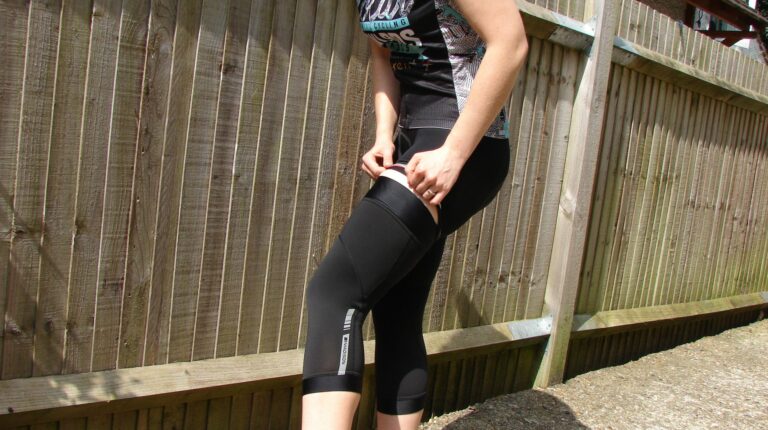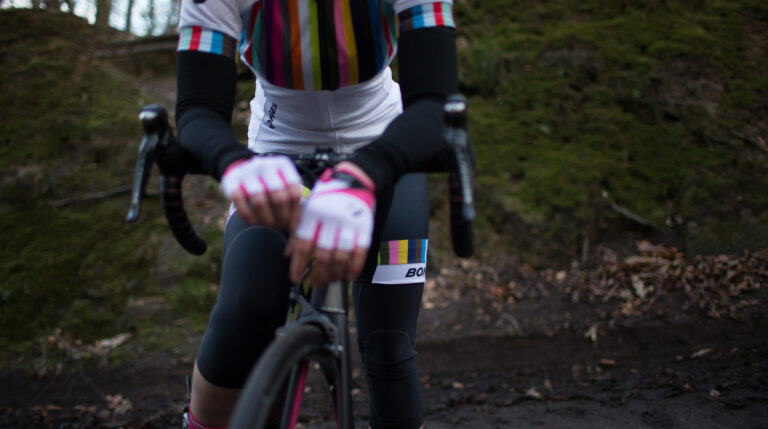Helmet brands are constantly looking for ways to cut down on materials, without sacrificing safety in an attempt to create cycling lids that avoid the ‘alien head’ look whilst being lightweight and comfortable to wear.
Manufacturers of cycling and automotive helmets – Bell – have thrown their hat into the ring with their new ‘Zephyr’ road helmet, and they’re proclaiming it to be the most advanced road helmet they’ve ever made.
Bell’s Sean Coffey told us: “We didn’t want to create the most aerodynamic helmet, we didn’t want to make the lightest helmet, we wanted to go for the most comfortable, balanced and sophisticated helmet.”
Gathering feedback from pro riders on their sponsored team as well as their own 60 years’ worth of helmet manufacturing expertise, Bell have created a lightweight helmet that uses what they’re calling ‘Float Fit Race’ and ‘Progressive Layering’ to administer comfort that of course meets all the safety requirements in the countries where they’re sold.
Bell invited TWC to test the helmet, riding the twisty climbs of the Swiss Alps over two days. Accumulating 125 miles in total, we’ve had a fair chance to gather first impressions.
Float Fit Race and Progressive Layering…

First – lets run through what ‘Float Fit Race’ and ‘Progressive Layering’ actually are.
‘Float Fit Race’ incorporates the extra safety layer – MIPS – into the retention system. Where previously, we’d be tightening the dial on the back of a helmet to feel the entire structure (including sweaty pads and plastic) move towards our head, the floating structure means that just the light plastic safety cage moves in to hug your noggin closer. This essentially means that there is less material against your head, and more room for your brain to breathe.

‘Progressive layering’ is also a brand new piece of tech from Bell, and they’ve patented it – so we know they’re keen to protect it. In this case, they’re talking about the way they’ve combined a high density EPS outer shell with a lower density EPS inner shell, as well as integrating MIPS into the Float Fit Race System. The dual layer means that Bell can offer a helmet that can cater for a wide range of impacts, yet the way the two layers meet as they’re bonded means that there is lots of room for extra venting.
Inside the helmet, Bell have also opted to continue their anti-sweat soaking pad so that it sits underneath the front protruding lip of the helmet. This is specifically designed to cut down on the amount of sweat than can roll into your eyes on hot, humid climbs and isn’t something we’ve seen done before.
The Zephyr is brand new, and does seem to be a departure from Bell’s more traditional shapes of the past. It’s also available in a wide range of colours – including a cool black and pink design (for both sexes), and a ‘Ghost’ reflective option as well as visible flouro yellow.
In Europe, where helmets are allowed to have larger vents and to be lighter, the Zephyr will weigh 253g and costs £199.99 or a little more for the ‘Ghost’ version.
For those who want a similar style and level of performance, but a lower price tag, there is the ‘Stratus’. This one is also available in ‘Joy Ride’ colours – Bell’s women’s branding. The use of ‘women’s branding’ on lower end options, and not ‘race’ options is a little tired, so we’re not too keen on this decision. However, it is also generally accepted that women’s heads aren’t differently shaped, just smaller – and the small ‘Zephyr’ fitted even my genuinely undersized noggin perfectly well.
Back to the tech. The Stratus is built using the same core design principles of the Zephyr, but uses ‘Float Fit’ instead of ‘Float Fit Race’, which doesn’t offer the same lateral adjustment (it doesn’t come in to meet your head at the sides) or integrated MIPS, though it does still feature MIPS tech. The weight is a little higher, at 265g but the cost is £124.99 with MIPS and £99.99 without.
How does it feel to ride in?

Having tested the Zephyr helmet out in the Swiss mountains, it certainly felt light and offered bucket loads more in terms of modern styling than I’ve seen from Bell in a while. Or ever.
Bell share the same distributor as Giro – generally my chosen helmet option – and the two brands happily co-exist in the same office. Coffey did comment that “some people have Giro shaped heads, some people have Bell shaped heads” – and I have to admit my narrow brainbox is really more of a Giro shape. However, the Zephyr slipped on surprisingly easily and was a welcome companion for a very up-and-down ride in the hills.
The retention system was easy to adjust and the helmet felt light and looked pretty sleek – at least on my ride companions, anyway. The weather was initially more UK thunderstorm worthy than Swiss summer, but temperatures did rise a little later as the sun showed itself a little, and I didn’t feel myself overheating in the head department, despite a 10 mile climb over the final section of our 75 mile ride. The rear section left plenty of room for my ponytail to slip through above the retention system, too.
Overall – this seems like a great new addition to Bell’s livery, and one that shows they’re keen to move with the times and embrace more modern styling whilst of course still offering the same security that we’d expect from one of the world’s leading helmet brands.
We’ll be testing the Zephyr with a little more attention to detail once the annual tech fest that is Eurobike has subsided.







